The best BBQ Delivery Boxes in the UK from small sustainable British Farms
Written in Collaboration with Coombe Farm Organic
We need farmers three times a day, at least. Definitely more if, like me, you’re occasionally working from home and the fridge is within easy reach between breakfast, lunch and dinner.
Good food is essential for our health. And an increasing body of work keeps proving how essential it is for the health of the planet, too.
But, how do we know what ‘good food’ actually is?
Should we be eating regenerative or organic? Is local always better? Are cows the enemy or part of the solution?
It’s confusing when on-the-one-hand headlines read: ‘More than 800m Amazon trees felled in six years to meet beef demand’ and on-the-other environmental farmers across Britain cry: ‘But, not all beef!’.
So, if you’re someone who wants to buy good produce and support farming that’s good for the animals and doesn’t participate in the destruction of the Amazon, the question is – what does good farming really look like? What are the most important aspects to consider?
We spoke with Coombe Farm Organic farm manager, Ryan Sloman-Brown, to find out.
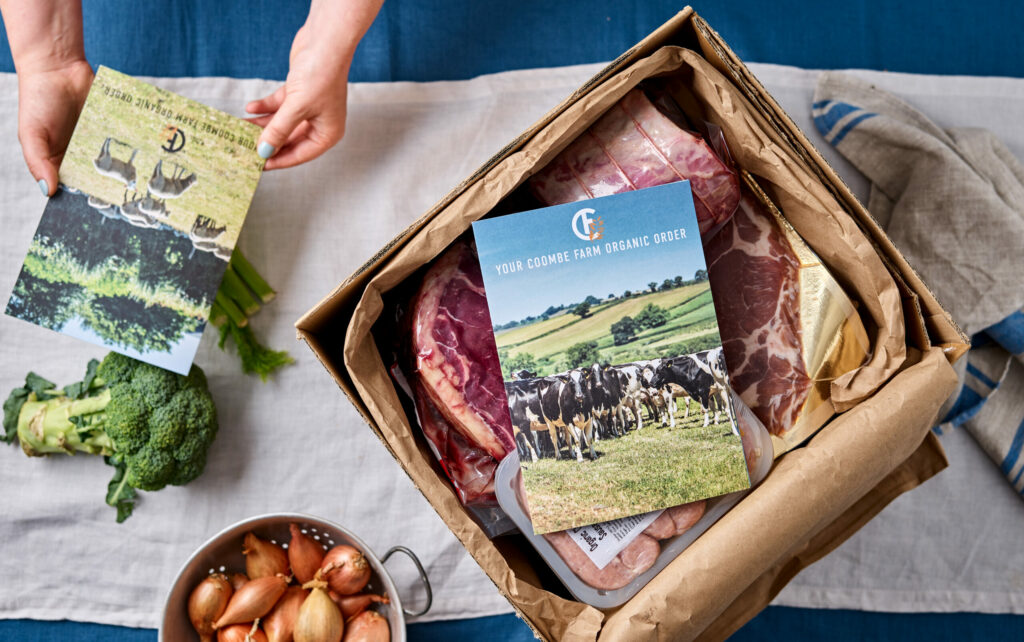
When there are so many different labels and certifications to choose from, Coombe Farm opts for organic, why?
At the heart of all farming movements – those of us with genuine intentions are all trying to achieve the same goals. We’re trying to produce good food to contribute to feeding 70 million people in this county and we’re trying to do this in a way that allows biodiversity to thrive, to give animals a life worth living and to preserve the land for future generations.
We could call ourselves a lot of things but we choose to certify and use the term ‘organic’ first. The reason is simple, with organic farming there are clear baselines and standards you have to adhere to – and people to verify that you’re doing what you say you’re doing.
This means that as a customer, you can simply look for the Soil Association logo on packs to know you’re buying good food you can trust. And if you want to know more you can read their guidelines and understand exactly what organic farmers are required to do as a minimum.
Through our website, social media, and farm visits, we try to demonstrate how we go even further than this.
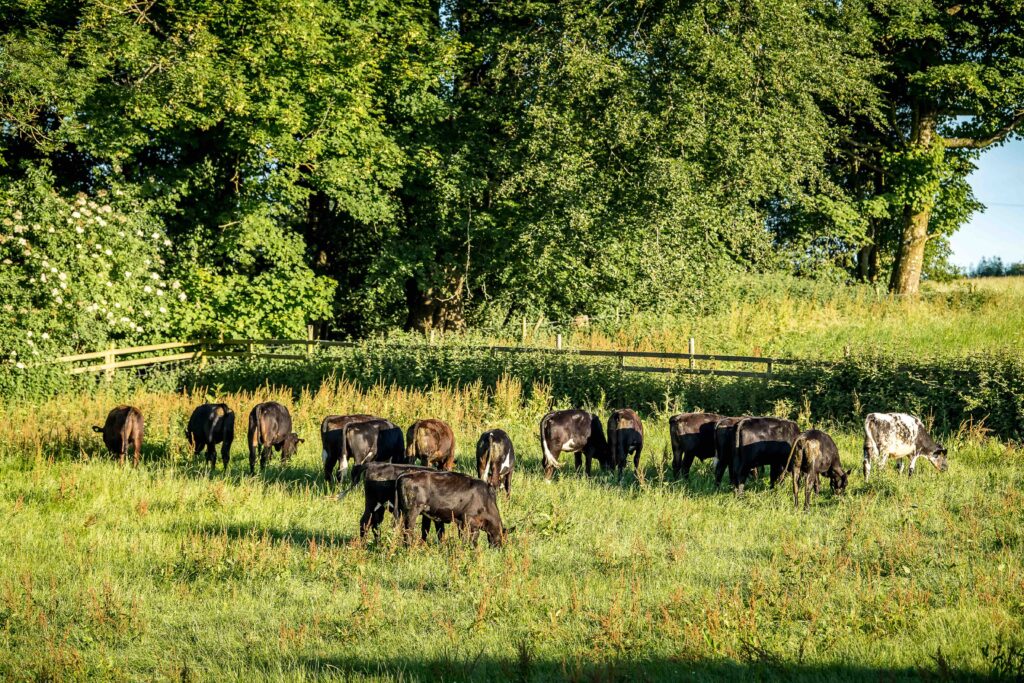
Would you also class yourself as a regenerative farmer?
Yes. We are farming in a way that is ‘regenerating’ the land.
I totally agree with the concept of regenerative farming, which goes back to the olden days of mixed farming.
The issue with using the term ‘regenerative’ is that farmers are interpreting it differently and doing it to differing degrees. Plus, larger companies are co-opting the word, so anyone can call themselves ‘regenerative’ even if their impact is not actually that good for the environment.
This is where it starts to get confusing for consumers who do not come from farming backgrounds and who can’t tell the difference between truly regenerative farmers and brands who use the term to greenwash.
A fundamental difference between ‘organic’ farmers and ‘regenerative’ farmers is the practices of ploughing vs no-till. What does this mean and how important is it?
Many farmers have lots of opinions about this. From my perspective, it breaks down like this:
Organic farming doesn’t allow for any chemical sprays or fertilisers, so we’re heavily reliant on ploughing to establish crops. Ploughing enables us to bury any weeds and farmyard manure which is spread on top of the ground by turning the soil over. This will then rot down and feed the new crop with the help of our healthy soil organisms.
In its truest sense, regenerative farming endorses ‘zero-till’ or ‘no-till’ as a main principle. This is a method of farming that doesn’t plough. Instead, it drills straight into the soil, causing minimal disturbance. It has its positives – keeping carbon in the soil and allowing the really important soil networks to thrive. However, it can be reliant on petrochemicals like glyphosate to kill off weeds, which is also not great for those networks.
We don’t use glyphosate in organic farming, which is why we plough.
But, we still very much consider ourselves to be regenerative due to the nature of how we manage our organic soils – through cropping rotations and the integration of livestock we naturally have a higher abundance of soil microbes and biodiversity across the farm.
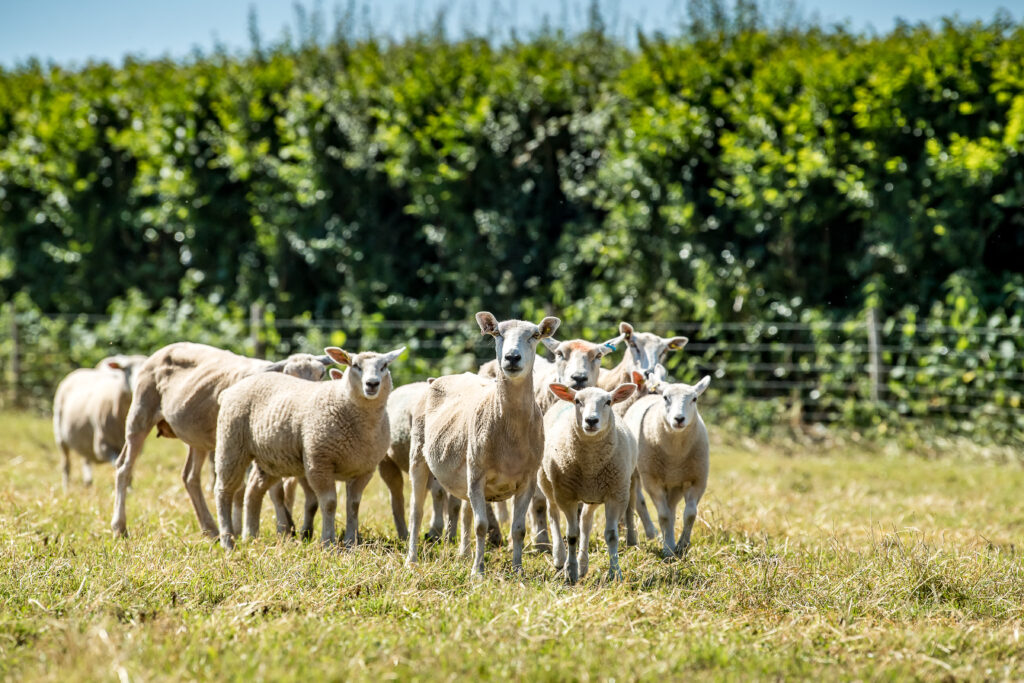
Can you see a future in organic farming where farmers might plough less and not have to use glyphosate?
Yes – and this is where combining traditional farming practices with new technology gets exciting. For example, we grow cover crops so that the soil has protection over winter. There have been some trials with a new crimper roller, which chops the cover crop killing it, and leaving a clean seedbed ready to plant seeds without the need to plough. Knowledge and technology are evolving really quickly in this area.
How important is this for us to be aware of?
If you’re a consumer looking to buy good food, this isn’t the most important factor to consider. It’s much more important to look for food that’s been produced to high standards of animal welfare and with consideration for the wider impact on the wildlife, soil and the environment, ideally with minimal petro-chemical herbicides and fertilisers.
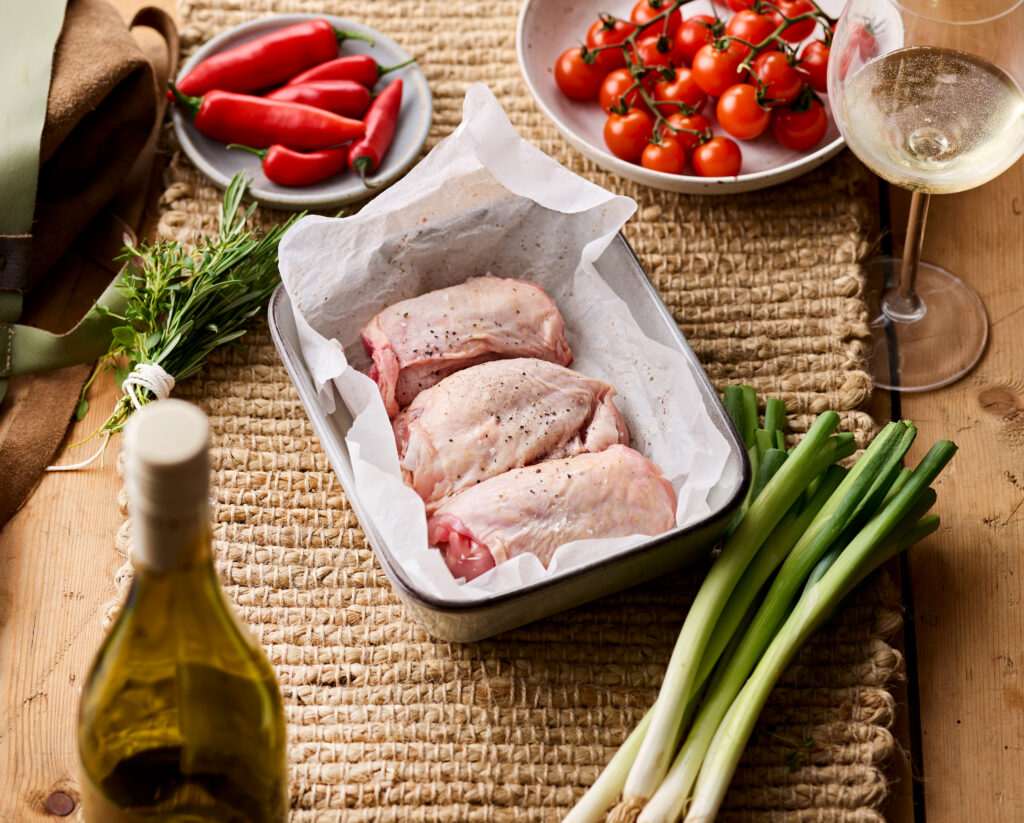
Good point. So, I’m in a shop or online trying to decide what the best options are to buy – how do I know?
This is why I like organic. The Soil Association logo is a really simple way to know that you’re buying produce which is farmed to some of the highest possible standards in the UK.
There are also lots of brilliant farmers and farms out there that aren’t certified. If you want to support them you will need to do a little more research yourself. Ask about how it is produced or even better see it for yourself!
If a farm is talking about carbon, that’s good but it’s not the only important metric.
A good farming system will have genuinely free-range animals. To give you some comparisons – our cows are outside for a minimum of 180 days a year, longer if the weather allows them to be. Our free-range chickens have 1.6 metres of range each. In industrial systems chickens are reared indoors in spaces the size of an A4 piece of paper.
How the animal is reared is another important question. Organic standards don’t allow farmers to put rings in pigs’ noses, file their teeth or castrate them. Other farmers can do all of these things, so you need to ask if they do or not.
How long an animal is grown for is also a good indicator. Especially when it comes to pigs and chickens – a conventional chicken is now grown abnormally fast, it reaches full weight in less than 35 days. An organic chicken takes double that time to grow – at least 70 days. Speed of growth is really important in terms of animal welfare because fast growth puts a lot of pressure on the animal – it’s pretty monstrous.
You might want to ask how much imported feed is going into the animals’ diets. We’re great at growing cereals in this country but don’t grow as much protein, so soya is often imported to feed animals, for example – huge demand for this is one of the reasons people link deforestation of the Amazon to animal farming.
So, ask what alternative sources of protein farmers are using. We’ve been working hard to be self-sustainable and reduce our reliance on imported feed. We are now down to 0.6% of the cereal that our beef cattle consume and 10% of the pig and chicken food being imported, which has been a huge shift. This has been achieved through growing a blend of whole crop silage, pea silage, grass silage, oats and barley here at Coombe Farm and purchasing Spelt Bran from Sharpham Park a few miles away. Our lambs are 100% grass-fed without any cereal supplements.
Every landscape is different, every farm is different. But, if you start to ask these questions, you can start to build up a picture of the farm.
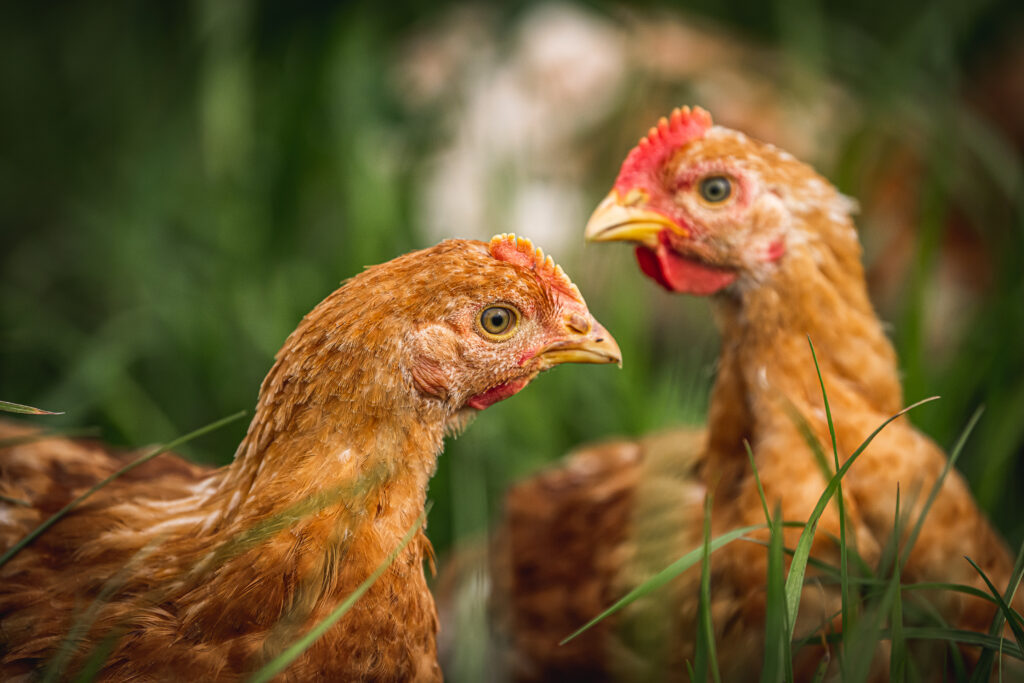
This is really useful to know – thank you. Any final thoughts?
An important part for any good farm is the need to be working with rather than against nature and in a cycle – rotating crops, rearing animals outside and using them as a key part of the farming process.
For example, we grow crops like red clover and lucerne to feed our cows in the winter months, these are plants that self-fertilise in the soil and once they’ve started to die off we run our organic chickens over the fields to add more organic manure, and graze off the grass. We then run the pigs behind them because they root around in the soil and pull up the ground, leaving it ready to plough and drill a crop in there to start the rotation again. So, we’re using plants and animals to regenerate a rich soil environment where we can grow crops again and again.
That’s what good farming looks like – and it feels complicated at first but once you find one or two farms that farm in this way you will be sorted in terms of getting most of your food needs from them. They’ll be really happy to answer any questions, so it gets easier! And ultimately you’ll be able to taste the difference.


